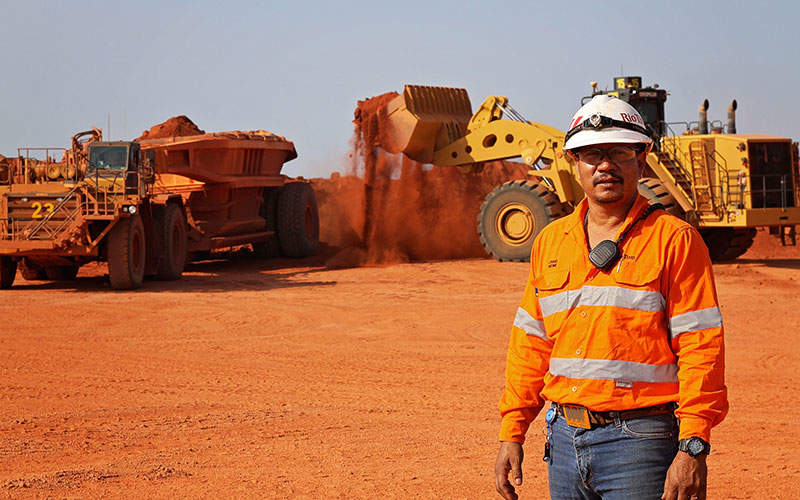The Amrun bauxite project (formerly South of Embley Project) is located near Boyd Point, 40km south of the existing Weipa mine and 40km north of Aurukun on the Cape York Peninsula in Far North Queensland, Australia.
The project is 100% owned by Rio Tinto and involves the development of two mining areas, namely the Boyd Point-Pera Head area, and the Norman Creek area as an extension to the former, and construction of associated processing, infrastructure and port facilities.
First production from the bauxite project was achieved in December 2018 while the mine was fully commissioned in March 2019. The mine is estimated to have a production life of approximately 40 years.
The project has a full production capacity of 22.8 million tonnes per annum (Mtpa), with an option for potential future expansions to reach a targeted production capacity of up to 50Mtpa.
The estimated cost for the development of the project is $1.9bn. The output from the project is distributed locally to Rio Tinto’s Yarwun Refinery and Queensland Alumina’s refinery in Gladstone and exported primarily to China.
Benefits of Amrun bauxite project
The project generated approximately 1,200 jobs during the peak construction phase and supports the existing workforce of roughly 1,400 employees and contractors at Rio Tinto’s Cape York bauxite operations.
Direct economic benefits from the project include the annual generation of A$108m ($78m approximately) to Western Cape York’s economy, A$270m ($195m approximately) to the economy of the Far North Queensland region, A$1.5bn ($1bn approximately) to Queensland and A$2bn ($1.45bn approximately) to the national economy.
The output from the project replaced the production from the depleting East Weipa mine and the Andoom mine and also increased the company’s bauxite exports from Cape York by approximately 10Mtpa.
Geology and reserves of the Amrun project
The project area straddles the Weipa mining leases ML7024 and ML6024. Mining activities are concentrated on the ML7024. The top of the bauxite strata is generally less than 1m below the ground surface and the average ore thickness across the project area is approximately 3.4m.
The project is located in the Carpentaria Basin, hosting marine and fluvial sediments. The top layered geological units include coastal dunes, estuarine and delta deposits, followed by the dominant ferruginous duricrust, including bauxite, derived from heavily laterised sandstones of the underlying Bulimba Formation.
The Amrun mine contains mineral resources totalling 678 million tonnes, and ore reserves of 1,044 million tonnes, as of 2020. Rio Tinto holds 1.49 billion tonnes of bauxite reserves and 1.91 billion tonnes of resources in the Cape York region.
Mining and processing at Amrun bauxite mine
The project involves the development of a shallow open-pit, using the existing fleet of front-end loaders and 180t dump trucks from the East Weipa site, as well as a processing plant, power station, warehouses and port facilities.
The mine includes two wet beneficiation plants at the Boyd infrastructure area and the Norman Creek area, along with associated processing and port facilities on the Cape York Peninsula in North Queensland. The final bauxite product is stockpiled before being loaded onto vessels by a conveyor.
Infrastructure for Australian bauxite project
The project is served by the Chith export facility which was constructed near Weipa in August 2018. The facility includes a new 650m-long access jetty and a 350m-long load wharf. It was designed for an initial capacity of 30 million dry product tonnes a year (Mdptpa), with a provision for expansion to 63Mdptpa in the future. Onshore components include 350m of ground conveyors and a transfer station.
Power requirements are met by a diesel-fuelled 20MW Amrun power station with associated transmission lines, located at the Boyd infrastructure area. The power station would be expanded in several stages. Constructed and operated by Aggreko, the power plant includes 22 diesel generators and four transformers.
Other major mine infrastructure includes a water supply dam, tailings storage facilities, haul roads connecting the processing plant and the deposits, and a ferry terminal on the Hey River to transport workers from Weipa to the mine site. Fulton Hogan constructed the Arraw Dam at remote Cape York to supply water to the Amrun bauxite project.
Buildings at the site house workshops, a warehouse, administration facilities, and a temporary accommodation camp for 630 people.
Ancillary infrastructure includes sewage treatment plants, general waste disposal areas, diesel storage facilities and telecommunications facilities.
Key players involved
The engineering, procurement, construction and management (EPCM) contractor for the project is Bechtel.
The concrete and sand required for the project were supplied by Boral via an on-site mobile batch plant. It also provided logistics services such as shipping of construction materials from Cairns to Weipa.
Civmec was awarded two major contracts, one by Rio Tinto for the construction of process facility and related infrastructure, and another by Sandvik for the supply, fabrication, surface treatment, mechanical and electrical install and modularisation of a stacker, reclaimer and ship-loader for bauxite material handling.
Monford Group carried out activities related to the mine infrastructure while ASPEC provided detailed technical engineering services for the project.
McConnell Dowell constructed the Chith export facility for the project while Jacobs was engaged to provide design engineering services for the marine works of the export facility. Bhagwan Marine provided marine and diving services for the project.






